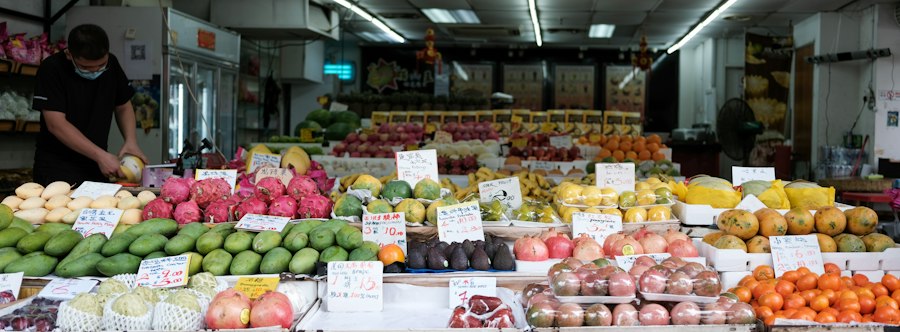The MarTech industry in Southeast Asia has been experiencing rapid growth in recent years. With the increasing digitalization of businesses and the rise of e-commerce, companies in the region are recognizing the importance of leveraging technology to enhance their marketing efforts. MarTech, or marketing technology, refers to the tools and platforms that enable businesses to automate and optimize their marketing activities.
In Southeast Asia, where the digital landscape is constantly evolving, MarTech plays a crucial role in helping businesses stay competitive. From understanding local consumer behavior and preferences to optimizing for mobile and social media, MarTech provides businesses with the tools they need to effectively reach their target audience and drive growth.
Key Takeaways
- MarTech is crucial for businesses in Southeast Asia to stay competitive
- Understanding local consumer behavior and preferences is key to successful MarTech implementation
- Mobile optimization is essential for reaching Southeast Asian consumers
- Social media marketing and localized content are powerful tools for MarTech success
- Influencer marketing can have a significant impact on Southeast Asian consumers
- Measuring ROI is crucial when investing in paid advertising
- Data privacy and security should not be overlooked in MarTech implementation
- To avoid the 7 Mangosteen Sins of MarTech, businesses should prioritize understanding local markets and consumer behavior, optimizing for mobile, utilizing social media and localized content, leveraging influencer marketing, measuring ROI, and prioritizing data privacy and security
- Resources for successful MarTech implementation in Southeast Asia include market research, localization services, and partnerships with local influencers and agencies.
Sin #1: Failing to Understand Local Consumer Behavior and Preferences
One of the biggest mistakes that businesses make in Southeast Asia is failing to understand the local consumer behavior and preferences. Each country in the region has its own unique cultural nuances and consumer habits, and what works in one country may not necessarily work in another.
For example, McDonald’s made the mistake of assuming that their global menu would be a hit in Southeast Asia. However, they failed to take into account the fact that consumers in the region have different taste preferences. As a result, they had to make significant changes to their menu offerings to cater to local tastes.
To avoid this sin, businesses need to invest time and resources into understanding the local market. This includes conducting market research, analyzing consumer data, and engaging with local communities. By gaining insights into local consumer behavior and preferences, businesses can tailor their marketing strategies to better resonate with their target audience.
Sin #2: Overlooking the Importance of Mobile Optimization
The rise of mobile usage in Southeast Asia has been nothing short of remarkable. With affordable smartphones becoming more accessible, people in the region are increasingly relying on their mobile devices for various activities, including shopping and social media.
However, many businesses in Southeast Asia still overlook the importance of mobile optimization. They fail to realize that a poor mobile experience can drive potential customers away and result in lost sales opportunities.
To avoid this sin, businesses need to prioritize mobile optimization in their MarTech strategies. This includes ensuring that their websites are mobile-friendly, optimizing their content for mobile devices, and investing in mobile advertising. By providing a seamless mobile experience, businesses can better engage with their target audience and drive conversions.
Sin #3: Neglecting the Power of Social Media Marketing
Social media has become an integral part of everyday life in Southeast Asia. With platforms like Facebook, Instagram, and WhatsApp dominating the digital landscape, businesses cannot afford to neglect the power of social media marketing.
However, many businesses in the region fail to leverage social media effectively. They either have a weak presence on social media or do not engage with their audience in a meaningful way.
To avoid this sin, businesses need to develop a strong social media strategy as part of their MarTech efforts. This includes creating engaging content, actively engaging with followers, and leveraging social media advertising to reach a wider audience. By harnessing the power of social media, businesses can build brand awareness, drive customer engagement, and ultimately increase sales.
Sin #4: Ignoring the Need for Localized Content
In a diverse region like Southeast Asia, where each country has its own unique language and culture, businesses cannot afford to ignore the need for localized content. Many companies make the mistake of using generic content that does not resonate with the local audience.
For example, Airbnb faced backlash in China when they launched a campaign featuring a slogan that was perceived as culturally insensitive. The company failed to understand the cultural nuances and preferences of the Chinese market, resulting in a PR crisis.
To avoid this sin, businesses need to invest in creating localized content that speaks to the local audience. This includes translating their content into the local language, adapting their messaging to align with local cultural norms, and incorporating local references and imagery. By providing localized content, businesses can better connect with their target audience and build trust.
Sin #5: Underestimating the Value of Influencer Marketing

Influencer marketing has become a powerful tool for businesses in Southeast Asia. With the rise of social media influencers, businesses can leverage their large following and influence to promote their products or services.
However, many businesses underestimate the value of influencer marketing and fail to incorporate it into their MarTech strategies. They either do not engage with influencers or do not choose the right influencers to collaborate with.
To avoid this sin, businesses need to recognize the value of influencer marketing and identify relevant influencers who align with their brand values and target audience. By partnering with influencers, businesses can tap into their reach and credibility to amplify their brand message and drive conversions.
Sin #6: Overspending on Paid Advertising without Measuring ROI
Paid advertising can be an effective way for businesses to reach their target audience and drive conversions. However, many businesses in Southeast Asia make the mistake of overspending on paid advertising without measuring the return on investment (ROI).
Without proper measurement and tracking, businesses cannot determine the effectiveness of their paid advertising campaigns and may end up wasting valuable resources.
To avoid this sin, businesses need to prioritize measuring ROI for their paid advertising efforts. This includes setting clear goals and objectives, tracking key performance indicators (KPIs), and analyzing the data to optimize campaigns. By measuring ROI, businesses can make informed decisions about their advertising spend and ensure that they are getting the most out of their investment.
Sin #7: Overlooking the Importance of Data Privacy and Security
Data privacy and security are critical considerations for businesses in today’s digital age. However, many businesses in Southeast Asia overlook the importance of protecting customer data and fail to implement proper security measures.
This can have serious consequences, not only in terms of potential data breaches but also in terms of damaging customer trust and reputation.
To avoid this sin, businesses need to prioritize data privacy and security in their MarTech strategies. This includes implementing robust security measures, complying with data protection regulations, and being transparent with customers about how their data is being used. By prioritizing data privacy and security, businesses can build trust with their customers and protect their reputation.
How to Avoid the 7 Mangosteen Sins of MarTech in Southeast Asia
In conclusion, businesses in Southeast Asia need to be aware of the 7 Mangosteen Sins of MarTech in order to avoid common pitfalls and maximize the effectiveness of their marketing efforts. By understanding local consumer behavior and preferences, optimizing for mobile, leveraging social media marketing, providing localized content, harnessing the power of influencer marketing, measuring ROI for paid advertising, and prioritizing data privacy and security, businesses can position themselves for success in the region.
Resources for Successful MarTech Implementation in Southeast Asia
For businesses looking to implement successful MarTech strategies in Southeast Asia, there are a variety of resources available. These include industry reports and studies, online courses and certifications, conferences and events, and consulting services. By leveraging these resources, businesses can stay up-to-date with the latest trends and best practices in MarTech and gain a competitive edge in the region.
If you’re interested in learning more about common mistakes to avoid in MarTech specifically in Southeast Asia, you should definitely check out this insightful article from Martech.com.my. Titled “The 7 Deadly Sins of MarTech: How to Avoid Them and Thrive in Southeast Asia,” it provides valuable insights into the pitfalls that many businesses encounter when implementing MarTech strategies in this region. From overlooking cultural nuances to underestimating the importance of localization, this article covers it all. Don’t miss out on this must-read resource for anyone looking to succeed in the MarTech landscape of Southeast Asia.
FAQs
What is MarTech?
MarTech is a term used to describe the intersection of marketing and technology. It refers to the tools and strategies used by businesses to promote their products or services through digital channels.
What is Mangosteen?
Mangosteen is a tropical fruit that is native to Southeast Asia. It is known for its sweet and tangy flavor, as well as its health benefits.
What are the 7 Mangosteen Sins of MarTech?
The 7 Mangosteen Sins of MarTech are common mistakes that businesses make when implementing marketing technology strategies in Southeast Asia. These include: not understanding the local market, failing to adapt to cultural differences, underestimating the importance of mobile, neglecting social media, relying too heavily on automation, ignoring data privacy laws, and not investing in talent development.
Why is it important to avoid these mistakes?
Avoiding these mistakes is important because they can lead to ineffective marketing strategies, wasted resources, and damage to a company’s reputation. By understanding the local market, adapting to cultural differences, and investing in talent development, businesses can improve their chances of success in Southeast Asia.
What are some examples of cultural differences in Southeast Asia?
Cultural differences in Southeast Asia can include differences in language, religion, customs, and social norms. For example, in some countries it may be considered rude to use a person’s first name without permission, or to show the soles of your feet. Understanding and respecting these differences can help businesses build stronger relationships with customers in the region.
What are some data privacy laws in Southeast Asia?
Data privacy laws in Southeast Asia vary by country, but some examples include the Personal Data Protection Act in Singapore, the Data Privacy Act in the Philippines, and the Personal Data Protection Law in Indonesia. These laws regulate the collection, use, and storage of personal data, and failure to comply can result in fines and legal action.
Why is mobile important in Southeast Asia?
Mobile is important in Southeast Asia because it is the primary way that many people access the internet. In some countries, mobile penetration rates are higher than desktop or laptop usage. This means that businesses need to prioritize mobile optimization in their marketing strategies to reach a wider audience.
What is talent development?
Talent development refers to the process of investing in the skills and knowledge of employees to help them grow and succeed in their careers. This can include training programs, mentorship, and opportunities for professional development. By investing in talent development, businesses can build a stronger workforce and improve their chances of success in Southeast Asia.

